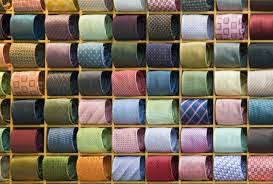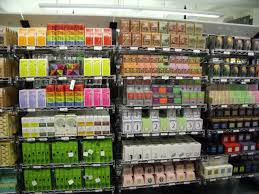
Visual merchandising does the job of a silent salesman. Visual merchandise is the presentation of a store and its merchandise in such a manner that will attract the attention of potential customers. It involves decorating the store keeping the interior presentation the same as what is promised on the outside. It gives scope to both creativity and innovation. Since the beginning, visual merchandising has played a vital role in the business of retail. It is the art of displaying products in a manner that is alluring to the eyes of the customer. It sets the background of the merchandise in an aesthetically pleasing fashion, presenting them in a way that would convert the window shoppers into prospects and eventually buyers of the product. The mannequins, the general arrangements of products in the store, the lighting, the softness of colors on the walls, the fashion in which racks are placed, the shapes, colors of packaging of the products and the way they are displayed on the racks and even the uniforms worn by the customer service personnel form part of the VM exercise of any retail format. As organized retail has been advancing in the country, VM has become the front line to capture consumers’ attention. Even as the industry expands, the need is to fuel the interest in the medium which players feel can become an industry by itself.

But as the time has progressed VM has played a key role even in the office décor, front office management of the corporate office, banks, schools, colleges, universities, government offices, hospitals etc. It displays the motto, culture, vision of the organization. Corporations visually communicate their values and norms through the deliberate and conscious construction of the material environment; the office décor, the color combinations of the walls, flooring, space utilization etc. The staff uniform, their manners and etiquettes speak a lot of the culture and values of the organizations. Well, customers, suppliers, other agencies, rivals, etc gain significant information about aspects of a corporation’s culture which other-wise often remains intangible or inaccessible.
Visual merchandising is an upcoming art

Visual merchandising is an upcoming art which is catching up in the metro cities. Good retail managements are using a lot of investment and energy on developing creative teams for visual merchandising. It respires in new life into the store products. Passion for design and creativity are essential to be a good visual merchandiser. A perfect design process and the ability to create ideas that are different are required. Updated awareness of happenings in fashion, art, social, cultural, political and economical environment world is strongly required so as to keep up-to-date with the dynamics of the market constantly. Benetton has long made a name for itself as much for its line of kicky, colorful clothing. But despite the 36-year-old chain’s success and longevity, it realized the need to create a new business model of larger-format, corporate-owned stores to keep it competitive. Part of that new business model included a bright, airy design scheme with flexible fixtures in place that would create a more unified look from store to store. That’s the lure of visual merchandising
Visual merchandising also includes window displays, signs, interior displays, cosmetic promotions, jewelry promotions, and any other special sales promotions taking place. Visual merchandising today combines the element of art and science, fusing creativity with the arithmetic of space utilization within retail space. In the retail format, utmost care is given to the merchandise displayed on the rack, the mannequins and the color of the facade displaying the brand image in synergy with other mediums. Retail players as they expand are taking care to ensure there is uniformity as far as the visual arrangement is concerned. Customers of today are driven by desire and latest trends. Stores have become a lot more glamorous.

In the current day and age, visual merchandising has become increasingly significant with more and more international design trends entering the Indian mark in keeping with this viewpoint, if you visit a Reebok store the mannequins in the display window reflect Reebok’s aim to capture the appeal and fancy of the young, energetic and sporty segment. The look is dynamic, with a male figure on the run and a female figure in a fitness routine. These along with an imposing graphic of a National Football League player convey the sporty theme etc.
For Tanishq, the jewellery business of Titan Industries Ltd, visual merchandising formed an important area of focus when it had taken a pause from audio visual promotional. After a gap of three years, the company has produced an audio visual for its products. Meanwhile, the concentration has been on in-store promotions and incorporating the various elements of visual merchandising at the stores.

The products displayed on the racks and shelves of the retail store fight for the mindshare of the customers. It is all up to the retailer the way he presents the products to the customers. The aesthetics used by the retailer, the spacing between two products, and the atmosphere of the store matters in attracting the customer’s mind share. Also, customer’s mindset about the overall appearance, expediency and feasibility matters in attracting them to the store.
In the earlier stage of Titan’s watch shops were narrow, dingy and typically located in the older, traditional markets of the city. People went there only to buy a watch, never to browse, never to simply check out. Visual merchandising was very much at the stage of “decoration” if any, and neither the brands nor the company saw it as important. Until, the management team headed by Xerxes Desai’s realized that the store can attract customers when there is positivity and lot of energy in it. Their vision dramatically changed and Titan adopted the concept of VM and rest it the history how Titan fought the dominant HMT in the market.

According to a CII (Confederation of Indian Industries) analysis the Indian retail business has the capacity to affluent consumers in the metros and upcoming cities who want to spend their earnings on fashion and lifestyle products is increasing very fast. No wonders, we see large stores of furniture, fashions, parlors, spas booming all over the Indian markets. Visual merchandising is one key area for the same.Further, India is placed sixth in the global retail development index and it is predicted that there will be 1000 -1500 stores in each of the metros by 2012. As both fashion brands and lifestyle brands India is striving to convert brand equity concept.
The year 2006, for instance, saw some big spends, with large department stores like Shopper’s Stop, Lifestyle and Westside spending in the range of Rs. 30,00,000 – 40,00,000 per season on visual merchandising. Visual merchandising spend had indeed doubled in 2006, compared to the last couple of years. Where fashion retailers traditionally spent approx. 1.5 to 2% of their turnover on visual merchandising in earlier years, the spend figure now stands at about 4% of the turnover. The Indian retail industry is waking up to the need for visual merchandising and the Indian society, attaining an international outlook is subconsciously creating a demand for it.

At Shopper’s Stop VM is used with other innovative practices. It needn’t be just the festive season that evokes interest and creates a spike in shopping – Shoppers’ Stop has hit upon the scheme of having various `festivals’ throughout the year to keep customers flocking to its shelves. They also use themes such as embroidery for their garment line of products, Parikrama, a festival centered on Indian art and crafts.
ITC believes in bringing in lot of creativity in their visual merchandising practices. Their Lifestyle Retailing business is consolidating its market presence in the branded apparel market. Cost management actions and business process streamlining are being pursued to enhance retail and manufacturing productivity. Investments in store design, visual merchandising and customer service are being made to enhance the shopping experience. It saw that the business grew by 23% in the last year due to emphasis on product design along with store design and visual merchandising.

Today, hotels, banks, hospitals, corporate offices all need VM to display their objectives, Unique Selling Propositions (USP) and even vision and missions. The local haths, melas, festivals, celebrations such as birthdays and weddings all require visual merchandise practices with help of props, mannequins, lots of hues and colours, scents, flower etc. People get attracted to energy exhibited in the place; people come in for a transaction with the organization only if they feel good. It is all about creating a positive outlook, beautification, atmosphere of the space. People want to feel the soul of the space they visit. Visual merchandising isn’t just about creating lively displays. It encompasses everything a customer sees, smells, feels, tastes, and hears when they walk into a store, an office, a business centre etc. All the senses have to work in concert to make the business space attractive.
Various institutes in the country and overseas are offering courses in visual merchandising. The government is also gearing up by organizing various training programs and allocating funds for participation in world trade fairs & exhibitions. There is a mushrooming of companies manufacturing fixtures, props, display systems etc. as well as providing complete visual merchandising solutions for fashion retailers, hospitals, banks, and universities. The new trend of “feel good” factor is creating lots of opportunities for the careers in visual merchandising.
So get innovative, think out of the box, and see lot of customers thronging to you!













































